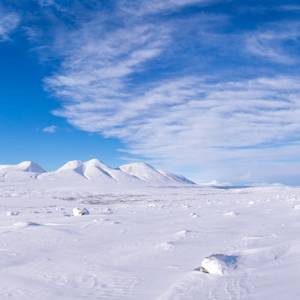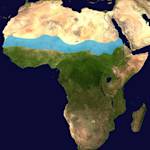Desertification of the Sahel
1968-1972 • African Sahel
Between 1968 and 1972, the semi-arid grassland regions of western African called the Sahel experienced what many have classified as the worst drought in the area's history, leading to widespread desertification and environmental degradation. During this time, "grazing became impossible and the lack of water triggered a large-scale famine that led to the first mobilization of external aid and the creation of the International Fund for Agricultural Development by United Nations." Scientists believe that the drought was a consequence of climate change as well as human development and land degradation.
"The Sahel, desertification beyond drought", We Are Water Foundation, 17 June 2019, https://www.wearewater.org/en/the-sahel-desertification-beyond-drought_318262. Additional sources: C. T. Agnew and A. Chappell, "Drought in the Sahel," GeoJournal, vol. 48, No. 4 (1999).
Image: Flockedereisbaer, CC BY-SA 3.0 DE via Wikimedia Commons


Learn about Maya Lin’s fifth and final memorial: a multi-platform science based artwork that presents an ecological history of our world - past, present, and future.

Discover ecological histories and stories of former abundance, loss, and recovery on the map of memory.

Learn how we can reduce our emissions and protect and restore species and habitats – around the world.

See how art can help us rethink the problems we face, and give us hope that each one of us can make a difference.

Help make a global memorial something personal and close to home. Share your stories of the natural world.


